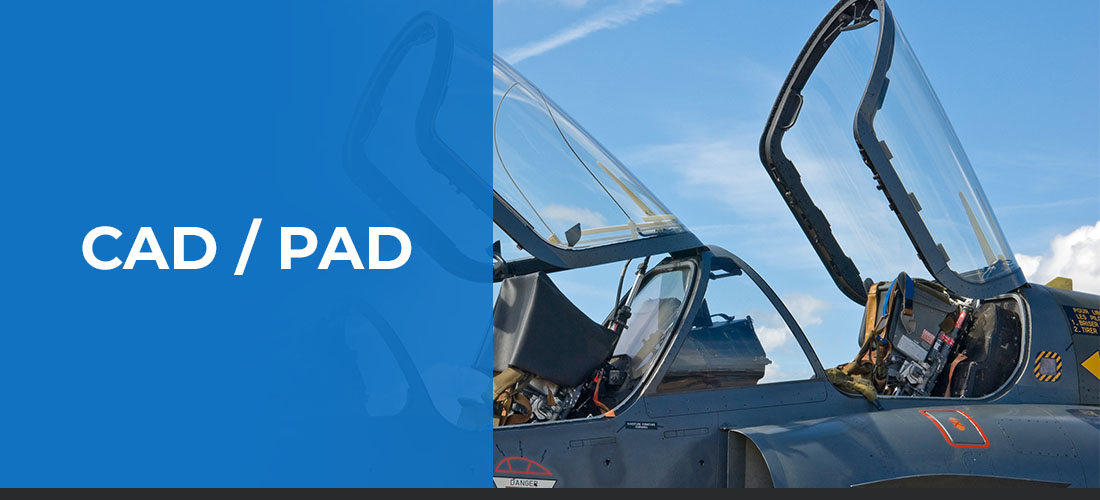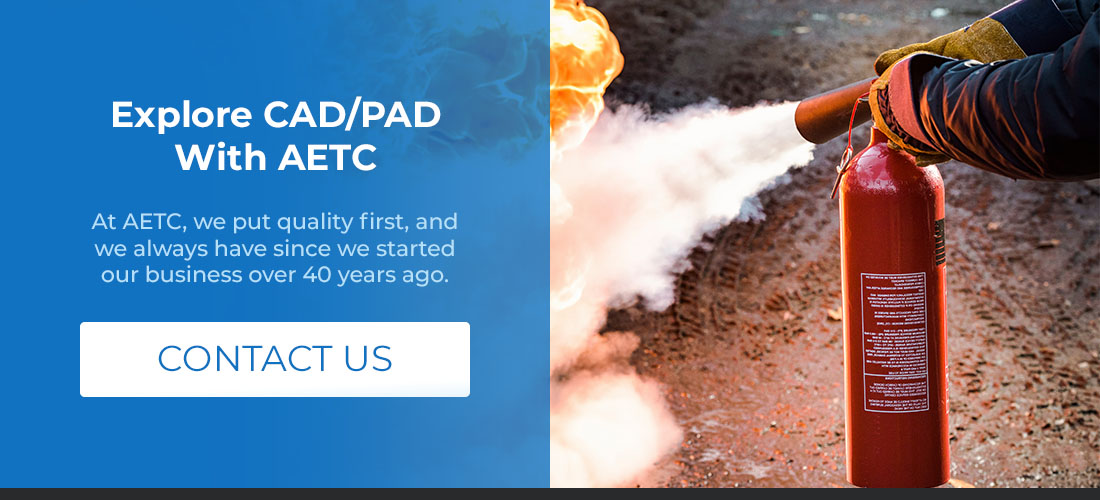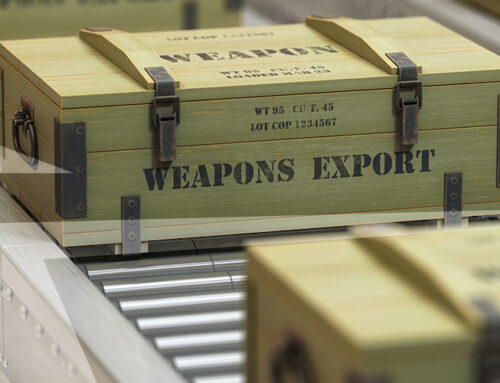Cartridge-actuated devices (CADs) and propellant-actuated devices (PADs) are valuable components used in everything from defense operations and mining to aeronautics and safety devices. These powerful pyrotechnics use different actuation methods to set off a specific reaction, such as igniting an explosive or ejecting a pressurized device like an aircraft ejection system.
They’re a vital part of many products within both commercial and defense sectors and require the highest levels of quality, along with rigorous standards and handling requirements. What goes into CAD/PAD, what different kinds are there and how do they work? Let’s take a closer look at these crucial devices.
What Is CAD/PAD?
CAD/PAD includes several types of small pyrotechnic devices and various designs to support functionality across applications, from aerospace equipment to missile systems to safety devices.
CADs are small explosive devices that actuate explosive systems, eject stores from launched devices and initiate escape devices for aircraft crew. PADs use a propellant to release or direct work through a propellant charge. They include catapults, rocket motors, weapons release, fire suppression systems, aircraft ejection systems and more. In both cases, CADs and PADs have energetic material with an electronic or mechanical actuating component.
These systems have a set shelf life and rigorous handling requirements because of the significant risk associated with defects and errors.
How Does CAD/PAD Work?
CADs and PADs each work differently but are based on similar principles. In both instances, the CAD/PAD responds to mechanical or electrical stimulus by dispensing thermal energy, which then creates propulsion, detonation, ignition or application. CAD/PAD devices can be both set off by and trigger various mechanisms.
The process of activating a CAD involves a small electric current that heats up a bridgewire and excites a continuous sensitive pyrotechnic mix. After it burns up, it propagates to and burns a propellant, creating a buildup of pressure within a space and triggering the response. It occurs in a very small space within just a few seconds. PADs can be triggered through components like electric detonators, explosive transfer lines and pressure cartridges. They utilize the gases produced by burning the propellant to start mechanical action.
Who Uses CAD/PAD?
CAD/PAD is used in a wide range of industries, stretching from outer space to the ocean. Those who use it apply CAD/PAD to defense systems, transportation devices and safety mechanisms. Back in 2013, there were about 2,800 different design configurations being used by the military, government agencies and private entities.
Those who use CAD/PAD often split up into the defense and commercial sectors. Commercial applications might include airbags in cars and fire extinguishers. In the defense sector, you’ll see these devices used in items like satellites, missile systems, bombs and parachute deployment. There’s also some overlap between the two sectors, such as devices like cutters that can be used in commercial or military aircraft safety devices.
Different Types of CAD/PAD
Within the category of CADs, there are two different types, one of which responds instantaneously to the initiation stimulus. These devices activate within 50 milliseconds and are called impulse cartridges. The other type of CAD is a delay cartridge, which has a varied delay time from .25 seconds to more than 2 seconds. They’re usually used to sequence ejection systems in both primary and backup modes. Their designs can vary significantly, but they generally power the components within safety and ejection systems.
Within those thousands of products we mentioned, CAD/PAD products can split up into 14 categories, with impulse cartridges falling under two subcategories based on the method of initiation:
- Aircraft stores, flares, chaff, sonobuoy, ejection cartridges
- Aircrew escape propulsion systems
- Automatic inflators
- Catapults, thrusters and removers
- Cutters
- Delay cartridges and initiators
- Detonating cords and charges
- Gas generators
- Impulse cartridges: Electrically initiated and percussion-initiated
- Impulse initiators
- Laser-initiated cartridges, detonators and initiators
- Rocket motor igniters
- Thermal batteries and components
- Other
Initiators vs. Detonators
Initiators and detonators are two types of CAD/PADs. They use heat or pressure to set off hard-to-ignite materials, like thermal battery systems, gas generators, propellants and safety fuses. A common type of CAD/PAD uses a bridgewire, a thin resistance wire that sets off a reaction. They use fuel and oxidizer solutions called pyrogen to set off the pyrotechnic materials. In other words, initiators use exothermic chemical reactions to fire the bridgewire, which then melts and creates an open circuit, allowing for detonation.
We also have exploding bridgewire detonators that create rapid and precise explosions, good for nuclear applications. They work very similarly with the same bridgewire system. Detonators are usually hermetically sealed, however, offering protection in extreme conditions. There are several different types of detonators, including standard, electrical, non-electric and electronic types.
Initiators and detonators have very similar capabilities, but detonators create shockwaves. An initiator provides the initial energy required for detonation.
Safety and Reliability of CAD/PAD
CAD/PADs have no room for error — they’re a critical part of the devices in which they’re used and can pose significant risks if defective or improperly stored or handled. Many of the applications for CAD/PAD involve devices used in emergency situations, like fire extinguishers and aircraft escape devices, which need to deploy in a fraction of a second without any interruptions. In other instances, they’re used to trigger further explosions, such as in military weaponry and mining explosives, meaning they absolutely cannot go off until necessary.
To avoid incidents like these, CAD/PADs are treated with extreme caution. They see rigorous routine check-ups and periodic replacements, as they only have a predetermined shelf life set by the manufacturer. If a defect is found, the device needs immediate replacement, especially when its primary purpose is safety-related, such as with aviation devices.
Explore CAD/PAD With AETC
When it comes to supporting items like explosives, fire extinguishers, aircraft safety devices and other critical mechanisms, there’s no room for error. At AETC, we put quality first, and we always have since we started our business over 40 years ago. Our team has over a century’s worth of combined experience, and they channel it all into creating exceptional, safe products that adhere to military specifications and provide the basis for tons of life-saving devices.
Our CAD/PAD products include fire extinguisher cartridges, initiators, detonators and cutters to suit the needs of many different items. Browse our CAD/PAD items today, or reach out to us online with any questions. Our top-notch customer service team is happy to help you find the right device.








